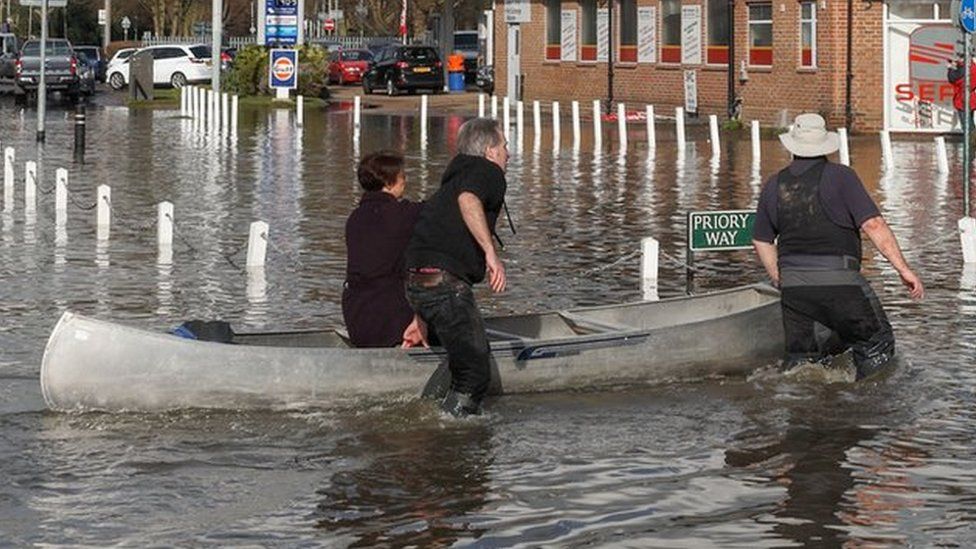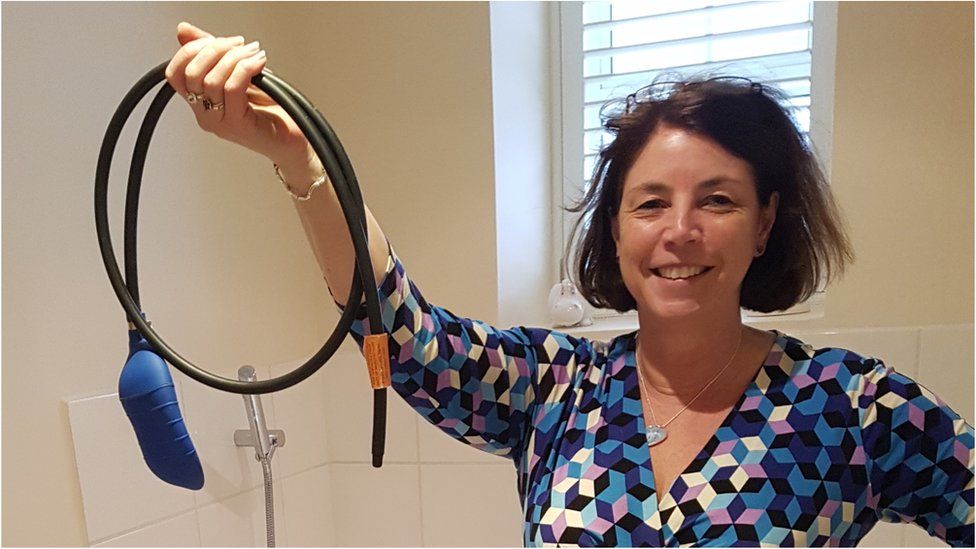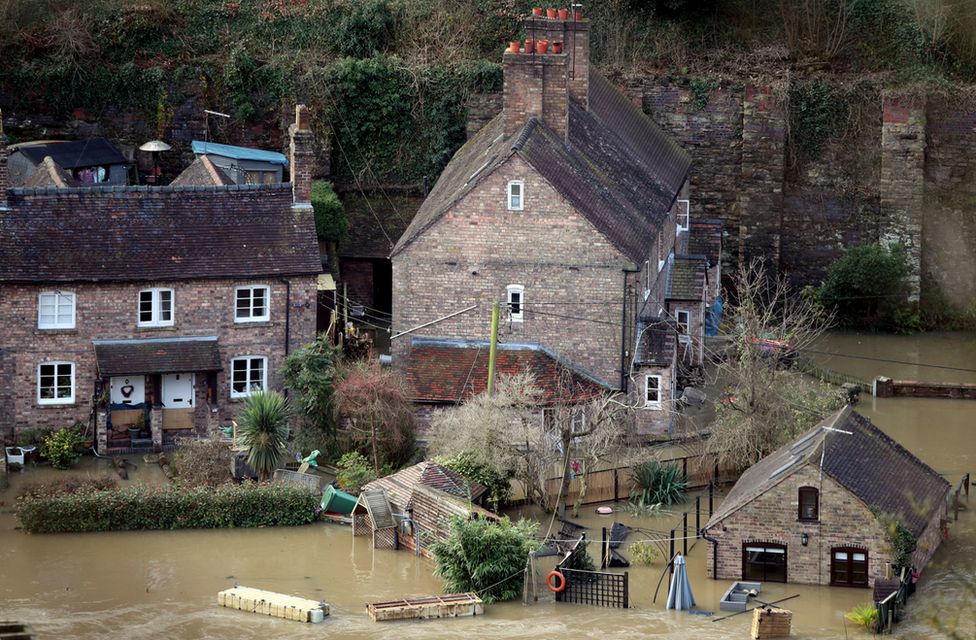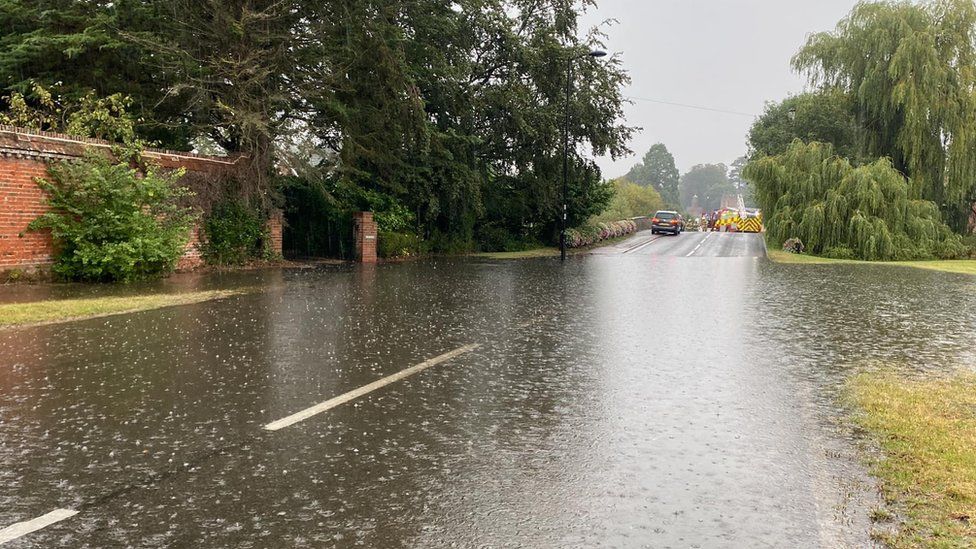Under a new scheme, money will be available for work on flood-hit properties to prevent repeat damage.

Image source, Susan Young
When the village of Datchet in the Thames Valley was hit by flooding, the only way Susan Young could reach her new home was by boat.
She had yet to even move into the lower ground floor flat before it was hit by the rising river waters in 2014.
But after the initial despair, she wanted to seize an opportunity. She was not only determined to repair her new home, but also to improve it so it was resilient to any future flooding.
“The village is beautiful so I felt the benefits outweighed the flood risks when I bought it. Clearly, the River Thames had other plans,” she said.
“But I have never regretted buying it. It took time to get it back into a liveable state, but then I was forced into an opportunity.”
Repair regime
The measures she took back then will now be available to more people through the Build Back Better scheme, which launches in a week’s time.
It will allow people, through participating insurers, to claim up to £10,000 for flood resilience measures over and above the cost of work to repair damage caused by a flood.
The funding comes from the government-backed Flood Re project, which was set up to provide affordable home insurance for people in flood-risk areas, which is itself paid for through a levy on UK insurers.
This video can not be played
To play this video you need to enable JavaScript in your browser.
Since the flooding in Datchet in Berkshire in 2014, Mrs Young has spent around £6,000 to £7,000 on flood prevention and resilience in her home, which is about 260m from the bank of the Thames.
This has included pumps and a specially designed door, with seals to stop water getting in. A flood guard has been added to the back door, and non-return valves fitted to the drains.
She has accepted that the risk cannot be entirely extinguished, so the floors are tiled, and doors and skirting boards are varnished rather than painted.
She has bricks to stand heavy furniture on if there is a flood warning, as well as freestanding pumps and sandbag substitutes ready, and even a toilet bung to prevent backflow.

Image source, Susan Young
“If you can reduce the damage, then it reduces the time you are out of your home after flooding, which is probably the worst part of it,” she said.
The village has community flood groups and flood plans. Mrs Young, now aged 59, said everyone had to play their part, which was why she welcomed the new initiative.
She paid for some of the work, and the survey required, with a grant. However, such local or national government funding can be slow, experts say, prompting the inception of the Build Back Better programme.
Andy Bord, chief executive of Flood Re, which will launch the scheme next week, said: “In the UK, since 1998 we have seen six of the wettest years on record, with 5.2 million homes and businesses at risk of flooding. The trajectory will only continue to worsen without urgent, collective action.”
He said homeowners needed to be encouraged to adapt and insurers needed to innovate to make tangible change in this area.
“To do so, we must throw the traditional principles of insurance to one side. This means thinking of future resilience and building back better after a flood, rather than simply returning a property to how it was before.”

Image source, Nick Potts/PA Media
Insurers NFU Mutual, Aviva, Ageas, Lloyds Banking Group and LV= General Insurance have pledged to join the scheme this year or early next year.
They can set their own cap on the extra funding, which could be less than £10,000 per claim. They will also decide what work can go ahead, and which measures will be installed.
However, insurers would be bound by a code of practice that states all customers should be treated equally and fairly.
Malcolm Tarling, from the Association of British Insurers, said the insurance sector was broadly supportive of the scheme, and the trade body was encouraging members to consider joining.
“Insurers have a role to play,” he said. “In the end, it is down to individual insurers whether they sign up or not.”
He added that some companies may already offer support to help people install flood resilience measures in their home.
-
- 10 February 2014

- 15 July 2021

- 15 February

